Park Plaza has built a 1,000-bedroom hotel and conference centre in the middle of one of London’s noisiest roundabouts. But it was delivering the project in just 24 months that kept the construction team suitably stressed
On the face of it, building a 1,000-bedroom luxury hotel in the middle of a traffic-ravaged, four-lane roundabout isn’t a great idea. This particular roundabout is on the southern end of London’s Westminster bridge, next to the back end of Waterloo station and circled by anonymous grey blocks. With all the noise and pollution from vehicles swarming around it, you’d have to feel sorry for a rat sleeping there.
On the plus side, architecturally speaking, the hotel doesn’t exactly have a tough act to follow. It replaces an extension to County Hall that was abandoned some 20 years ago, after Margaret Thatcher abolished the Greater London Council, and was voted one of Britain’s ugliest buildings in a poll for Channel 4’s Demolition programme in 2005. The rest of County Hall was snapped up years ago by developers but nobody wanted a concrete monstrosity in the middle of a roundabout.
The brave souls who have taken on the site are from hotel group Park Plaza. Their construction arm, Gear Construction (see box, page 49), has turned it into a hotel complete with London’s second largest ballroom and conference facilities. Park Plaza reckons there is very little choice in London for those wanting to attend a conference or big dinner and then simply walk upstairs to bed afterwards. It has also teamed up with the Queen Elizabeth II conference centre over the water at Parliament Square to provide accommodation for their delegates. But the big question is, will people want to stay here? And for anyone contemplating a similar project, how did they build such a massive building in such a difficult location?
Checking in
The first hurdle that guests will encounter is physically getting to the building. They will have to brave the road, as the original tunnel linking the island site with County Hall has been filled in. This isn’t as bad as it sounds, as the roundabout has been cut down in size. The section of road next to Westminster bridge has been paved over and turned into an entrance plaza. Traffic flow has been maintained by turning the remaining road space into a two-way system. This may sound confusing but, considering the direction of traffic flow has been changed four times during this project, drivers must be getting used to it by now. The only problem with the present arrangement is that a bus lane cuts through the plaza. It only serves one route, the 381, which runs every eight to 10 minutes and needs to go all the way around the building as this is the end of its route. Park Plaza has tried to get Transport for London to divert the bus, but so far without success.
Once safely inside, guests are faced by a logical layout. They can either drop down into the basement for the conference facilities or go up the escalators to the hotel reception, bars and restaurant on the first floor. It feels like a typical five-star hotel: well appointed, modern and slick. You could be anywhere in the world – until you turn to face the entrance, at which point you know exactly where you are. There is a fantastic view over Westminster bridge towards the Houses of Parliament and Big Ben – the classic postcard view of London.
Nor is the road intrusive once inside the building. Bedrooms at the front enjoy the same river view and are situated well above the double decker buses and lorries. The bedrooms have double-skinned cladding which does a very good job of reducing traffic noise to a whisper.
The view over the river has dictated the internal layout. In plan, the building is similar in shape to a guitar plectrum (see plan, page 48), with one long side that overlooks the river. The building has a V-shaped atrium with the wide end at the bridge side of the building. The idea is that as many bedrooms as possible will have that Westminster sunset view. Bedrooms open off a central spine corridor running along each floor – the ones on the inner side of the corridor get the light and views from the atrium and the ones on the outside face the street. Inevitably, some of the rooms overlook the more anonymous side of the site but are at least spared the railway line, as the lift cores occupy the part of the building closest to the tracks.
All this sits on top of the cavernous ballroom in the basement. Flexibility is the watchword here: 1,000 people can sit down to dinner or it can be subdivided into four spaces for smaller events. The ballroom can also form part of a wider exhibition space – there is another 500m2 outside the it and another 1,000m2 on the floor above. These spaces can be subdivided to form up to 35 meeting rooms.
Tight site, tight schedule
Naturally, the client wanted to get the hotel open as quickly as possible, so the construction programme was restricted to a demanding two years and two months. The only way to achieve this was by using top-down construction, with work pushing ahead on the massive basements at the same time as the superstructure.
This put even more pressure on what was always going to be a logistically complicated project. Gear was allowed to take out two lanes of the roundabout in one area, enough to accommodate up to three lorries. TfL rules forbid lorries stopping in the vicinity, which was problematic when construction materials were being delivered at the same time as spoil was being removed. “First thing in the morning, all the lorries were queuing up across the bridge,” says Philip Burton, Gear’s senior site manager. “The only way to keep them moving was by circling the roundabout – otherwise we would have got into trouble.” Lorries would have to drive round until one of the three parking spaces was free.
Deliveries were made yet more difficult by the lack of storage on site. A holding yard in Essex was used to store goods. During the fit-out phase, goods were delivered during the day and dedicated teams distributed them to the relevant floors at night. The road meant access for workers was a problem – the 700 workers used the existing tunnel from County Hall to get to the site and were under threat of prosecution from the Health and Safety Executive if they didn’t.
The need to keep the 1,200m2 ballroom column free has driven the structural design and construction method. Post-tensioned floors have been used extensively to minimise the number of columns. The first floor is open plan and there is a ground floor service yard that has been spanned using post-tensioned slabs.
The ballroom precluded the use of conventional columns to support the floorplates on each side of the atrium. The answer is a huge truss that spans the width of the atrium from the second floor up to level 13. A Vierendeel truss was used as this has steel members set at 90Þ, thereby allowing windows to be inserted. Each truss sits on two columns 32m apart on either side of the ballroom.
The building cantilevers over the road by 7m which creates more space in the finished building, but also presented Burton with a unique problem. In the early storeys of construction he was dealing with two discrete structures separated by the atrium, “each trying to fall into the road”.
The building has a post-tensioned slab at level 13, which acts as a ring beam tying both halves together. But until this stage was reached, extensive temporary works were needed to prop each side of the building up. “Instead of this being an add on, it became a major feature of the construction process,” says Burton. Big jacks were placed in the temporary works, which could be adjusted to accommodate the changing loads as more storeys were added.
Fitting out
Top-down construction on its own wasn’t going to save enough time to meet the tough programme, so some way of speeding up the time-consuming fit-out had be found. The answer was a neat pod solution. Each pod contains a fully fitted bathroom, but there was more to it than that. A small fancoil unit on the roof of the pod takes care of the heating, cooling and ventilation needs of each room. The pod exterior has fire sprinklers, which cover the bedroom, and is fully finished with a wardrobe, shelving, wooden cladding and space for the minibar.
The pod structures were made in a factory in Newcastle and fitted out in another factory by Gear. The power, ventilation and water pipes on each pod simply connect to the one above and below. This solution means the only other services needed in each room are sockets for the lights and data cables.
The bedroom structure is formed using insitu concrete side walls and slabs with each end left open. The plan was to use tunnel form construction but the shape of the building means the walls for each room taper inwards slightly, so this was ruled out. All the data, lighting and socket outlet cabling was cast in with the concrete structure. Rebecca McArthur, design manager for Gear, describes the structural design and cable runs as a challenge. “Because the building is on a curve, it meant every single one of the 1,037 rooms had to be drawn up individually,” she says. “It would be difficult to find a more complicated building to work on than this one.”
As the structure was built, the concrete floors were power floated at night, which eliminated the need for a separate screed and saved yet more time. Once the walls were skimmed, the structure was ready for the pods. The concrete structure had to be at least three floors ahead of the floor where the pods were needed because they had to be slid in from the side. The pods were installed at night because the cranes were being used for the structure during the day.
The unitised cladding system was installed three floors below the rooms with pods. Each pod doubles up as the end wall for the bedrooms, so the only job left was to install the carpets and the bedroom door. “We were carpeting the building before the frame was complete. It meant we had every single trade on site at the same time, from concrete workers at the top to carpet fitters downstairs,” says Burton.
Now the building is completed, can it be judged a success? According to Andrew Swindell, the hotel’s general manager, £10m worth of conference bookings have been taken for 2010, with another £40m committed for future years. Externally the hotel is a big beast, its bulk broken up by vertical fins of coloured glass. It is softer on the eye than the building it replaces but hardly a shining piece of architecture. Still, the hotel is a perfectly decent place to stay, and if Park Plaza can persuade TfL to send the 381 along to the next bridge instead, then one of London’s least lovely roundabouts will finally be consigned to history.
The Gear approach
Gear Construction is part of Israeli company Red Sea Group, which also owns the Park Plaza hotel group. Its formal name is GC Project Management and it was set up to deliver the Park Plaza hotels. It has been operating in the UK for the past 15 years.
Originally the site was owned by a Gaillard/Frogmore joint venture, which had planning permission for a 700-bedroom hotel. This was financed on a “buy to let” basis with investors buying a room and leasing it back to the hotel operator for a 6% return. When Park Plaza came on board it introduced the conference facility and got planning permission for another 300 rooms by adding three storeys. It has retained the buy to let concept.
The hotel, which has a total project cost of £300m, has been procured on a construction management contract. Unusually some packages, including the concrete works, the M&E and fit-out, have been procured on a labour-only basis. For example the concrete was done by a Romanian company, with Gear providing accommodation and food for the workers.
All the design and co-ordination has been done by Gear. “It’s cheaper, plus you get fewer disputes and we couldn’t have achieved the programme unless we did it this way,” says Rebecca McArthur, Gear’s design manager. “It simplifies the paper trail and design changes. We would have to oversee the work in any case so we might as well manage the team.”
More specialised packages such as the cladding, which was done by Chinese company Yuanda Aluminium have been procured conventionally.
The Sleep Event Europe, taking place 23 - 24 November 2011 fuses inspiration, innovation and opportunities for the design, development and architecture of hotels across the globe. Secure your place today www.thesleepevent.com
Project Team
client Marlbray
architect Uri Blumenthal Architects and Town Planners BUJ Architects
structural engineer David Engineers
electrical engineer R Cohen & Associates Electrical and Automation Consulting Engineers
mechanical engineer Zvi Ronen Consulting Engineers
project manager GC Project Management
Downloads
Section and plan building drawings
Other, Size 0 kbThe V-shaped atrium
Other, Size 0 kb





















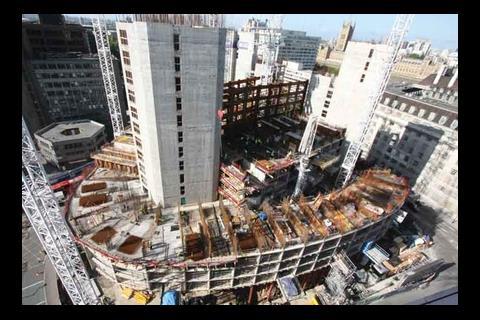
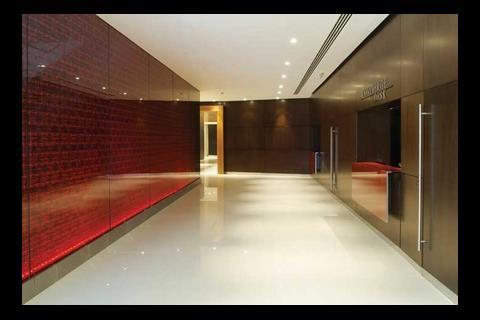
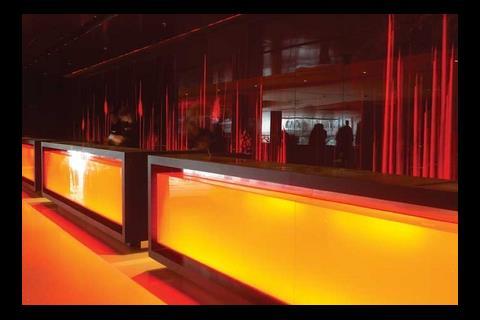
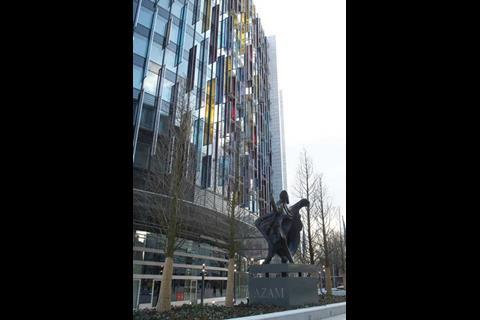
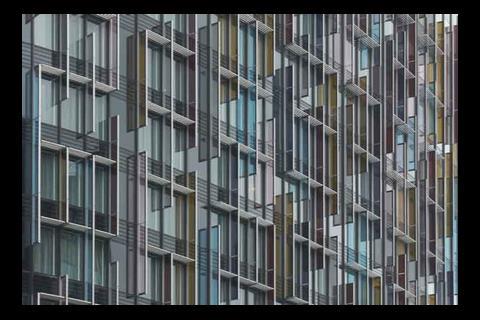







No comments yet